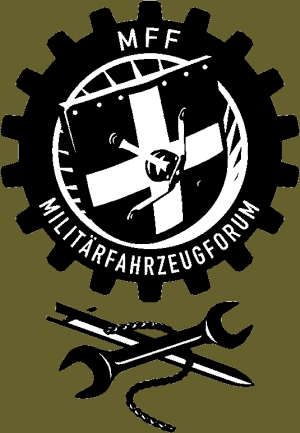Hi, thanks for the add. Sorry that this is in English, but Chrome can translate it for you.
There must be some German soldiers out there who remember the trials with the Alvis Stalwarts.
There must also be someone who knows the dates that the three Stalwarts were disposed of.
Germany bought Stalwart chassis number PV14. PV stands for Private Venture, as the British Army had not asked for this type of vehicle when Alvis started developing it. This was made to the same Standard as an FV620. The official FV620 starts at chassis number 16, and has the chassis number STAL 16
Germany then bought two FV622D Mark 2 Stalwarts in 1966. They were chassis numbers STAL II / 16 and STAL II / 17.
You're probably all thinking that I'm talking about the fake ones that the Technik Museum Sinsheim got fooled into buying, but I'm not.
This pair are both ex British Army Over the Rhine Stalwarts.
The German authorities requested a few difference. Germany asked that the sideboards and tailboards be slightly higher than the standard height.
They also requested that the front indicator and side lights be changed to the Hella combination lights, and be fitted to the side of the cab rather than fitted to the front. This makes the pair FV622D.
For clarity
D = Deutschland
O = Österreich
S = Sweden
Here, we see one Stalwart is well and truly stuck on the river bank, with German troops transferring Jerry cans from one Stalwart to the other. On both vehicles we can see that the sides are higher than the cab, and we clearly see the combination side and indicator light on the side of the cab.
Austria also bought what appears to be five FV622O Stalwarts, two being bought after the sideboards had been revised and hung down vertically instead of sticking out. They changed the hinges, so that the sideboards didn't sit on the tyres at the top.
I know a man who bought 4 Stalwarts from Austria in the mid 1980s, and shipped them back to the UK. Sadly, their destiny is currently unknown.
The Austrian ones had standard height side and tailboards, but it had the same Hella combination lights on the front.
People talk about the Saladin, Saracen, Salamander and Stalwart all having the same hull. They do not. The material is all the same, the components are the same or similar, but the actual hulls are different for each vehicle.
This is the Saladin hull.
And the Stalwart hull. Note the flat ledge, and the width of the area.
Al of the area with the blue mask is the thicker composite metal. All of the metal above this level is either aluminium or thin plate steel
People talk about the Stalwart being armoured.
The Stalwart empty of cargo, but with a full tank of fuel, etc is around 8.5 tons, and carried around 5 tons. There was discussion for it to be armoured to the same level as the vehicles that it supports, ie FV433 Abbot Self Propelled gun. Also to give it smoke dischargers, and some other bits. But they decided that it was already heavy. This is the main reason that they didn't fit the K60 multifuel engine, because of its weight.
But the actual hull plating where the drive comes through is the same material as the Saladin and Saracen.
Stalwart was deployed to Aden in the 1960s, and a number suffered from driving over land mines. This mine damage was captured in a British documentary about Aden. The FV620 had the vehicle batteries at the front of the cab, on the right side. The only injury from these mine strikes was of the driver receiving acid burns from battery acid.
I hope you found this of interest. I have lots of information on my website. And Roland has been most helpful in my research on these amazing vehicles.
I used to drive them in Germany, when I was based in Osnabruck back in the 1980s.
Mrk


